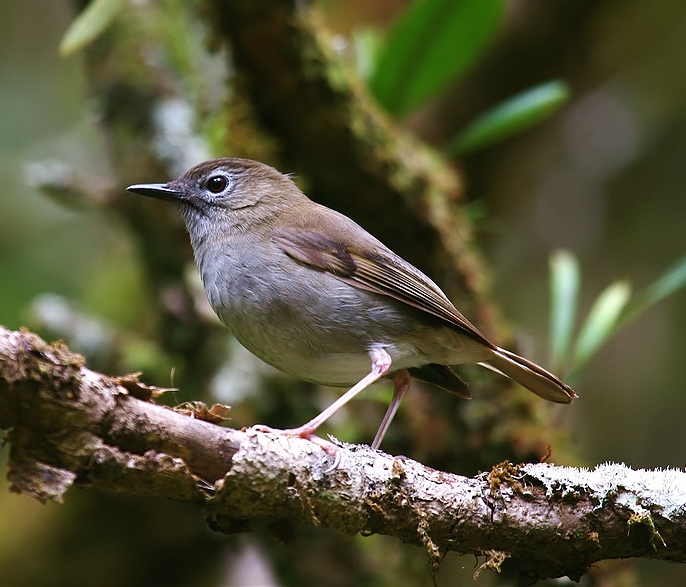 |
| Photo by Mitch Walters (Flickr) |
Common name:
puaiohi (en); tordo-solitário-puaiohi (pt); solitaire puaïohi (fr); solitario puaiohi (es); Palmerklarino (de)
Taxonomy:
Order Passeriformes
Family Turdidae
Range:
This species is endemic to the island of Kaua’i, in the Hawai’i archipelago, where it is presently only found at the Alaka`i Wilderness Preserve.
Size:
These birds are 17 cm long and weigh 37-43 g.
Habitat:
The puaiohi is now restricted to high-elevation rainforests, favouring ravines and stream banks with a rich understorey. They are present at altitudes of 1.000-1.500 m.
Diet:
They feed mainly on fruits and berries, namely olapa Cheirodendron trigynum, lapalapa C. platyphyllum, ōhia ha Syzygium sandwicensis and kanawao Broussaisia arguta. They also hunt some invertebrates, such as snails and insects, especially during the breeding season. Being the only frugivore in Kaua’i this species possibly plays an important role in seed dispersal.
Breeding:
The puaiohi is monogamous, but there is some evidence of extra-pair paternity. They breed in march-September, nesting in cavities or ledges on cliffs or trees which are lined with moss and ferns. There the female lays 2 grayish-green to greenish-blue eggs with irregular reddish-brown splotches. She incubates the eggs alone for 13-15 days. The chicks are fed by both parents and fledge 16-22 days after hatching. Each pair may raise up to 4 broods per year.
Conservation:
IUCN status – CR (Critically Endangered)
This species has a very small breeding range and a global population estimated at just 130-330 individuals. Following past declined and range contractions caused by habitat destruction, the species is now increasing thanks to a captive breeding and reintroduction programme in the Alaka’i Wilderness Preserve, having more than doubled in the last 15 years. The main threats to the puaiohi include diseases, hurricane damage, predation by native short-eared owls Asio flammeus and introduced rats, competition with introduced insects, birds and mammals and habitat changes causes by introduced plant species. The destruction of the understorey by feral pigs has been implicated in past declines and may still be a problem in the future. Beside the ongoing captive breeding and reintroduction programme, other conservation initiatives include the control of rat populations, the installation of rodent-resistent nest boxes and ungulate exclusion fences.







